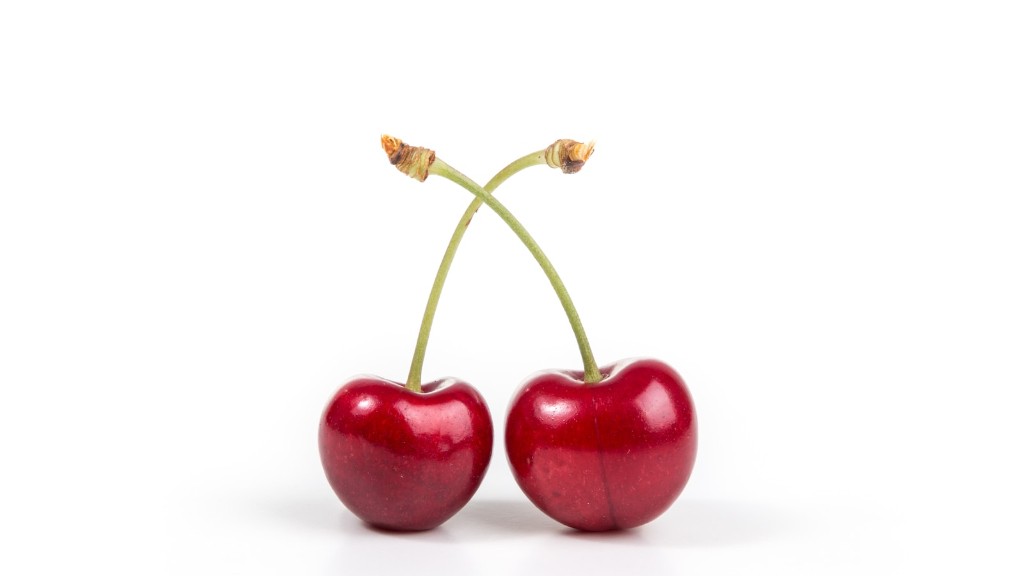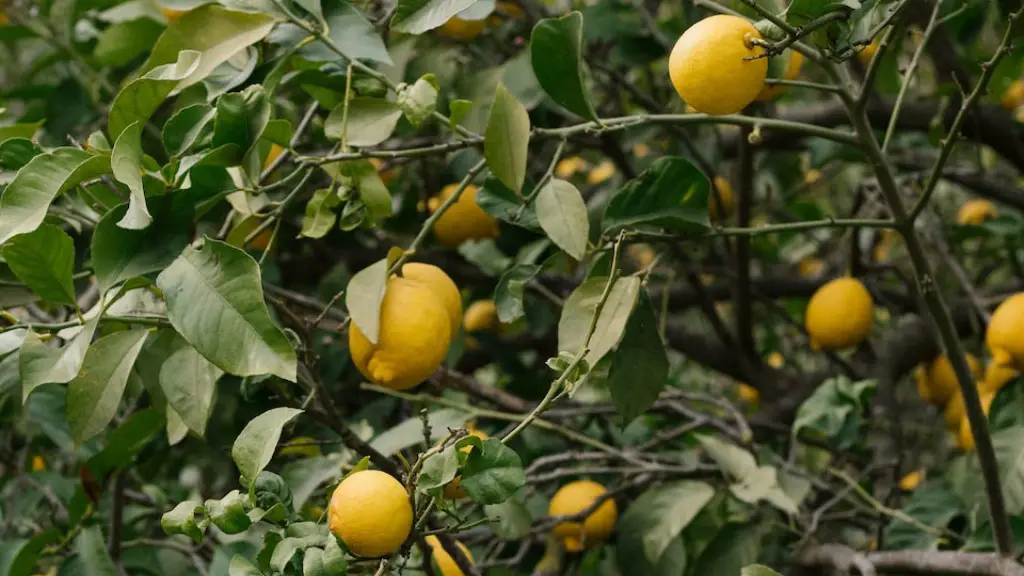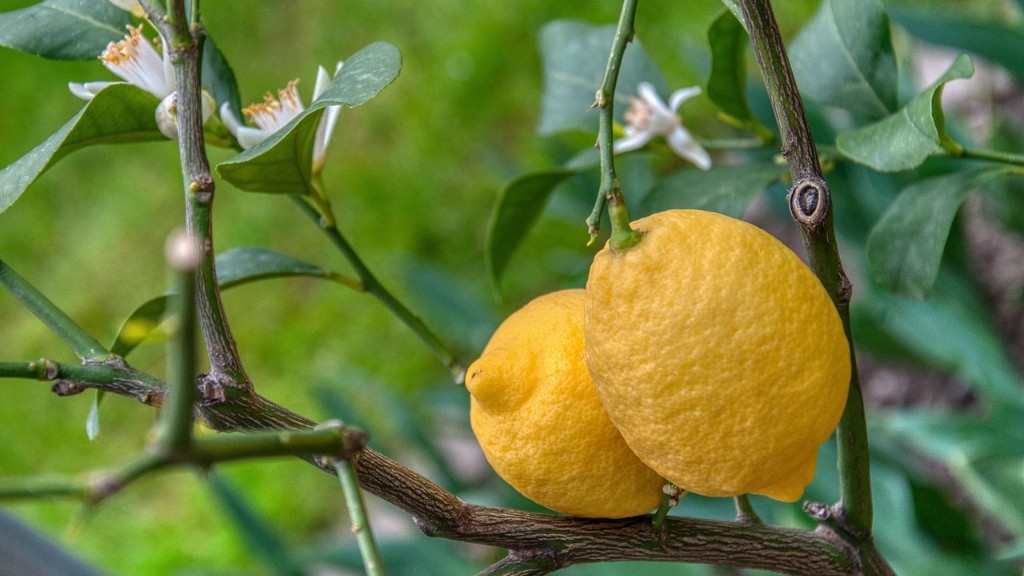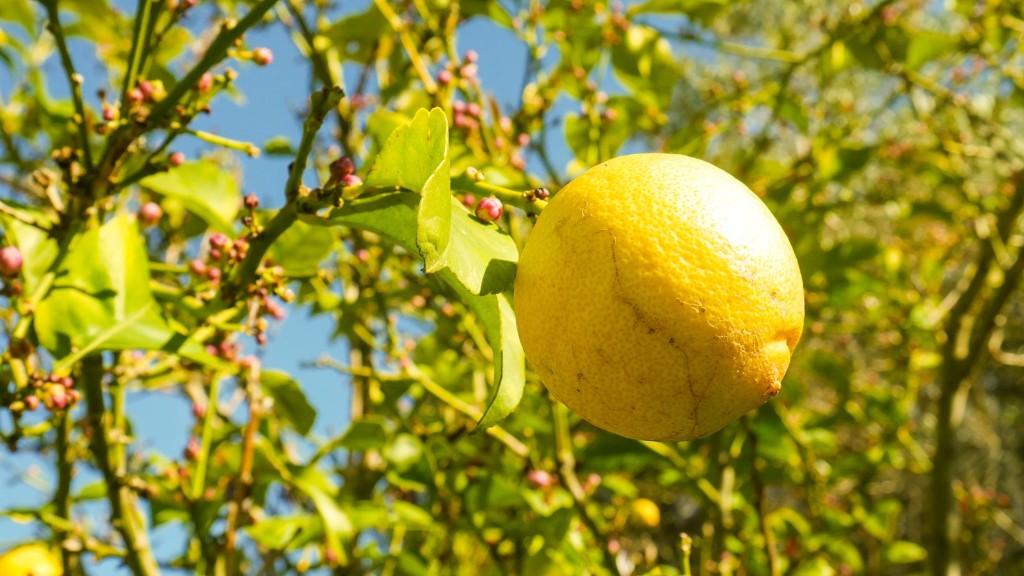Cherry trees are a type of fruit tree, known for their beautiful blossoms, delicate petals, and delicious fruit. As with any other type of tree, a cherry tree should have several years to reach its full growth potential. Allowing a cherry tree to reach its full size will increase yields of cherries and improve the overall aesthetics of the tree.
Generally speaking, it takes three to four years before you can expect cherries to begin appearing on the tree. During these first few years, the tree should be well taken care of, with adequate water, sunlight, and soil nutrients. This will allow the tree to develop a healthy root system and build strength. During the second and third years, you can expect to see the tree beginning to blossom, though it may not bear cherries yet.
After the first few years of growth, a healthy cherry tree will quickly reach a mature height of twenty or thirty feet. Consistently providing the tree with adequate water and sunlight, and monitoring for threats like pests and diseases, will ensure it does not become stunted. Once the tree is fully mature, it will bear fruit each year with minimal effort.
When it comes to caring for a cherry tree, there are several important steps one should take. First, the amount of water the tree will receive should be monitored with a meter or gauge. During times of drought, it may need to be watered more often. Secondly, inspect the tree periodically for signs of disease and pests, and contact a professional tree service if necessary. Finally, apply fertilizer during the tree’s bloom period to give it an extra nourishment.
Overall, cherry trees are fairly low maintenance and can bear fruit for many years with the proper care. As long as a gardener is diligent about providing the tree with adequate water, sunlight, and nutrients, it should reach full maturity in three to four years. From there, the tree can bear cherries for many years to come.
Effects of Poor Care and Maintenance
Unfortunately, if a cherry tree does not receive the proper care and maintenance it requires, it can become stunted and fail to produce cherries. Poor soil nutrients, inadequate sunlight and water, or an abundance of pests and disease can all slow down the growth of the tree and degrade its health. In some cases, a cherry tree that is neglected may even die after only a few years.
It is important to note that extreme weather such as floods and droughts can also have an adverse effect on a cherry tree. If a cherry tree is in a dry and arid climate, a gardener should be ready to water often to ensure it does not become stunted. Additionally, too much or too little sunlight can be damaging for a cherry tree.
By taking the proper steps, like monitoring the tree’s water use, inspecting it for pests, and providing proper nutrients, a cherry tree can be expected to reach full growth in three to four years, and bear cherries for many years after.
Pros and Cons of Growing Cherry Trees
Growing a cherry tree can have a variety of benefits and drawbacks. On the upside, cherry trees can bear fruit for many years with little effort, and their blossoms make for a stunning aesthetic touch. On the downside, they require diligent care and monitoring, and can take a few years to fully mature. Additionally, pests and diseases can wreak havoc on a cherry tree in a short period of time.
Overall, the decision to grow a cherry tree largely comes down to personal preference. Those with a bit of extra time and resources can enjoy the fruits of the cherry tree for many years, but be prepared for the occasional issue that might come its way.
Harvesting and Storing Cherries
Once the cherry tree has produced fruit, it is time to start harvesting. Cherries should be picked from the tree carefully and gently, as they can easily bruise. Additionally, they should be used as soon as possible, as they have limited shelf life.
If cherries will not be eaten right away, they can be stored in a cool and dry place. If necessary, cherries can be frozen and kept refrigerated for up to a year. Another option is to make jam or jelly, both of which can be stored for much longer than fresh cherries. Thus, if one grows a cherry tree they will have plenty of options when it comes to storing and consuming the fruit.
Preserving and Selling Cherry Trees
Cherry Trees can also be used for more than just eating the fruit. Many arborists specialize in preserving and selling cherry trees for decorative purposes. These trees can be sold to customers for their beauty and resilience. This is a great option for those who want to make some extra money, or just appreciate the aesthetic of a well-preserved tree.
Preserving a cherry tree is no easy task, however. Pruning and trimming must be done consistently to maintain the tree’s shape, and irrigation should be provided to ensure proper hydration. Additionally, tree surgeons should be called in if there are any signs of pests or diseases, as these can quickly ruin a cherry tree.
General Tips
When growing cherry trees, following a few simple tips can make a huge difference. First, place the tree in a location that receives plenty of sunlight but has some shelter from the wind. This will help ensure optimal growth and development. Secondly, water the tree at regular intervals, preferably with a sprinkler or garden hose. This will ensure the tree receives the hydration it needs.
Finally, inspect the tree periodically for signs of pests and disease. If necessary, contact a professional arborist to help eradicate any persistent problems. With proper care and preservation, cherry trees can produce delicious fruit for many years.




